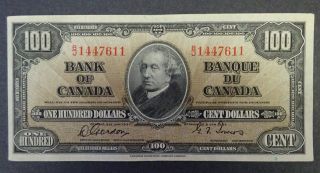
The ink can be scraped off, so worn notes tend to have fewer if any, glowing dots.
Canadian bank note value series#
They are the Canadian Bank Note Company and BA International Inc., a part of the Giesecke & Devrient GmbH group of companies.Įach note in the 1988 series was sprinkled with special green ink dots that glow when exposed to ultraviolet light. Previously, notes were printed on paper composed of pure cotton at two Ottawa companies contracted for the purpose. Notes continue to be improved, with the latest notes made of a plastic material. Some of the printing on a 100 is textured so that it is easy to feel, quite different from normal printing.Īll Canadian banknotes underwent a major redesign in 1986, partially to incorporate some of the latest anti- forgery methods. This "micro-printed" background is very hard to copy. The front had a wavy background of extremely small but still clear numeral 100s. It also had a holographic sticker showing the amount in the top left side, which changes from gold to green when tilted. On the reverse side was a wilderness scene with Canada geese. It featured, on the front, a portrait of Sir Robert Borden, the coat of arms, and a picture of the Centre Block of Parliament. The older "Birds of Canada" design remained in circulation as of late 2004. This design was placed into circulation on 17 March 2004. As well as textured printing, this new 2004 design incorporates a special tactile feature similar to Braille dots for the blind indicating the denomination. Yellow dots representing the EURion constellation can be found on both sides (and on all 2001 series notes). The reverse also has a visible security feature: an interleaved metallic strip, reading '100 CAN' repeatedly along its length. The reverse side depicts themes in Canadian exploration, including a map drawn by Samuel de Champlain and a canoe that would be used in his era, as well as a telecommunications antenna, the RADARSAT-1 satellite and a satellite image of Canada it also has a quotation from Miriam Waddington's poem " Jacques Cartier in Toronto". Security features visible from the front include a hologram strip along the left side, depicting the number 100 alternated with maple leaves a watermark of Borden's portrait and a broken-up number 100, which resolves itself when backlit. The front features a portrait of Robert Borden, the coat of arms, and a picture of the East Block of the Parliament buildings. The previous 100-dollar note is dominantly brown in colour. On 20 June 2011, Bank of Canada governor Mark Carney and Finance Minister Jim Flaherty unveiled the new $100 notes. The note's design and change of material to a polymer (plastic) paper, for longevity and counterfeit prevention, was first announced on 10 March 2011. Additional features include transparent text, a metallic portrait, raised ink, and partially hidden numbers. The other window is in the shape of a maple leaf. One window extends from the top to the bottom of the note and has holographic images inlaid. Security features introduced into the note design include two transparent windows, which make the notes harder to forge than the traditional notes. The notes are dominantly brown in colour the front design of the note features former prime minister Robert Borden and the design on the back depicts the discovery of insulin. The current 100- dollar note was put into circulation through major banks in November 2011, made of a durable polymer instead of the traditional paper notes. It is the highest-valued and least-circulated of the notes since the $1000 note was gradually removed from circulation starting in 2000. The Canadian one-hundred-dollar note is one of five banknotes of the Canadian dollar. "Medical Innovation" Discovery of insulin to treat diabetes DNA strand ECG (electrocardiogram)
Canadian bank note value registration#
Transparent windows, metallic portrait, EURion constellation, Tactile marks, Registration device, Raised printing, UV printing

This article relies excessively on references to primary sources.


 0 kommentar(er)
0 kommentar(er)
